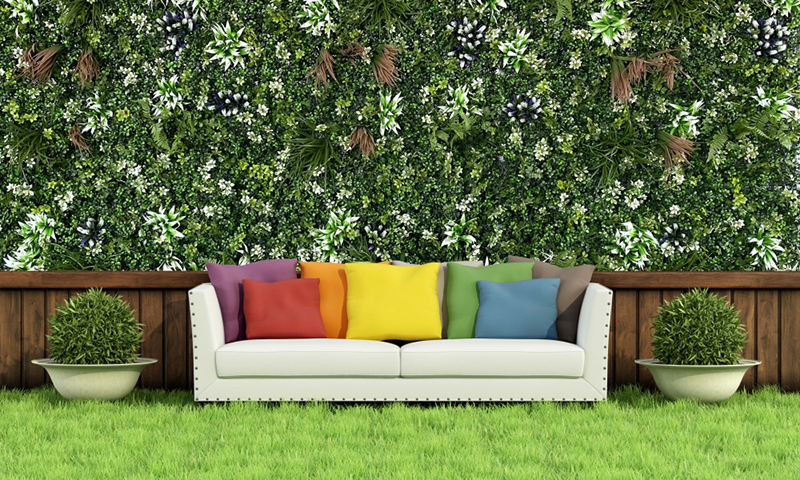Urban environments often face challenges related to air pollution, stemming from vehicle emissions, industrial activities, and construction. 3D artificial vertical gardens have emerged as a promising solution, offering not only aesthetic appeal but also significant air purification benefits. This article delves into the mechanisms behind their ability to clean the air and examines their applications in various urban settings.
Vertical gardens improve air quality through a combination of physical filtration and biological processes. The plants in these gardens capture particulate matter (PM) such as dust, pollen, and soot on their leaf surfaces, effectively removing these pollutants from the air. Studies have shown that vegetation can reduce PM concentrations by up to 20–30% in urban areas, depending on plant density and species.
In addition to physical filtration, plants absorb gaseous pollutants like nitrogen dioxide (NO₂), sulfur dioxide (SO₂), and volatile organic compounds (VOCs) through tiny pores in their leaves. These pollutants are then broken down or stored within plant tissues, reducing their concentration in the surrounding environment. The soil and substrate within vertical gardens also play a role in air purification, as microorganisms in the soil can degrade certain pollutants.
The integration of vertical gardens into building facades and public spaces offers a sustainable approach to air quality management. In cities, vertical gardens can be strategically placed near highways, industrial zones, or busy intersections to mitigate the impact of vehicle emissions. For example, plant-covered walls along roads can capture pollutants before they disperse into residential areas, improving air quality for nearby communities.
Indoors, vertical gardens can enhance air quality in offices, schools, and healthcare facilities. By absorbing pollutants and releasing oxygen through photosynthesis, these installations create healthier indoor environments. This is particularly beneficial in spaces with limited ventilation, where airborne contaminants can accumulate. Vertical gardens can also contribute to psychological well-being by introducing natural elements into built environments, reducing stress and improving productivity.
Not all plants are equally effective at purifying air. Certain species, such as ferns, spider plants, and peace lilies, are known for their high pollutant-removal rates. When designing vertical gardens for air purification, selecting plants with large leaf surfaces and a high capacity for absorbing gaseous pollutants is crucial. Additionally, incorporating a diverse mix of plant species can enhance purification efficiency, as different plants may excel at removing specific pollutants.
The design of the vertical garden system also influences its air purification capabilities. Ensuring adequate airflow around the plants allows for better pollutant capture, while proper irrigation and maintenance prevent the buildup of dust or mold on leaf surfaces. Innovations in substrate technology, such as the use of activated carbon or biochar, can further enhance the garden’s ability to remove contaminants.
One of the key advantages of vertical gardens is their scalability. They can be installed on a small scale, such as in residential balconies or indoor partitions, or on a large scale, covering entire building facades. This adaptability makes them suitable for a wide range of urban settings, from dense city centers to suburban developments.
Moreover, vertical gardens can be integrated with existing urban infrastructure, such as noise barriers or solar panels, to create multifunctional green systems. For example, combining a vertical garden with a noise-reducing structure can simultaneously address air pollution and noise intrusion. In the future, advances in modular design and smart technology may allow for even more efficient and customizable vertical garden installations.
The air purification capabilities of 3D artificial vertical gardens represent a significant advancement in urban environmental management. By leveraging natural processes and innovative design, these installations offer a sustainable solution to air pollution. As cities continue to grow, the integration of vertical gardens into architectural and urban planning will become increasingly vital, contributing to cleaner, healthier, and more livable spaces.

Contact: Amy
Phone: 86-15311787313
E-mail: info@foszmac.com
Whatsapp:86-15311787313
Add: Fengtai District, Dacheng Road, No.24 Building, Room 203, Beijing, China